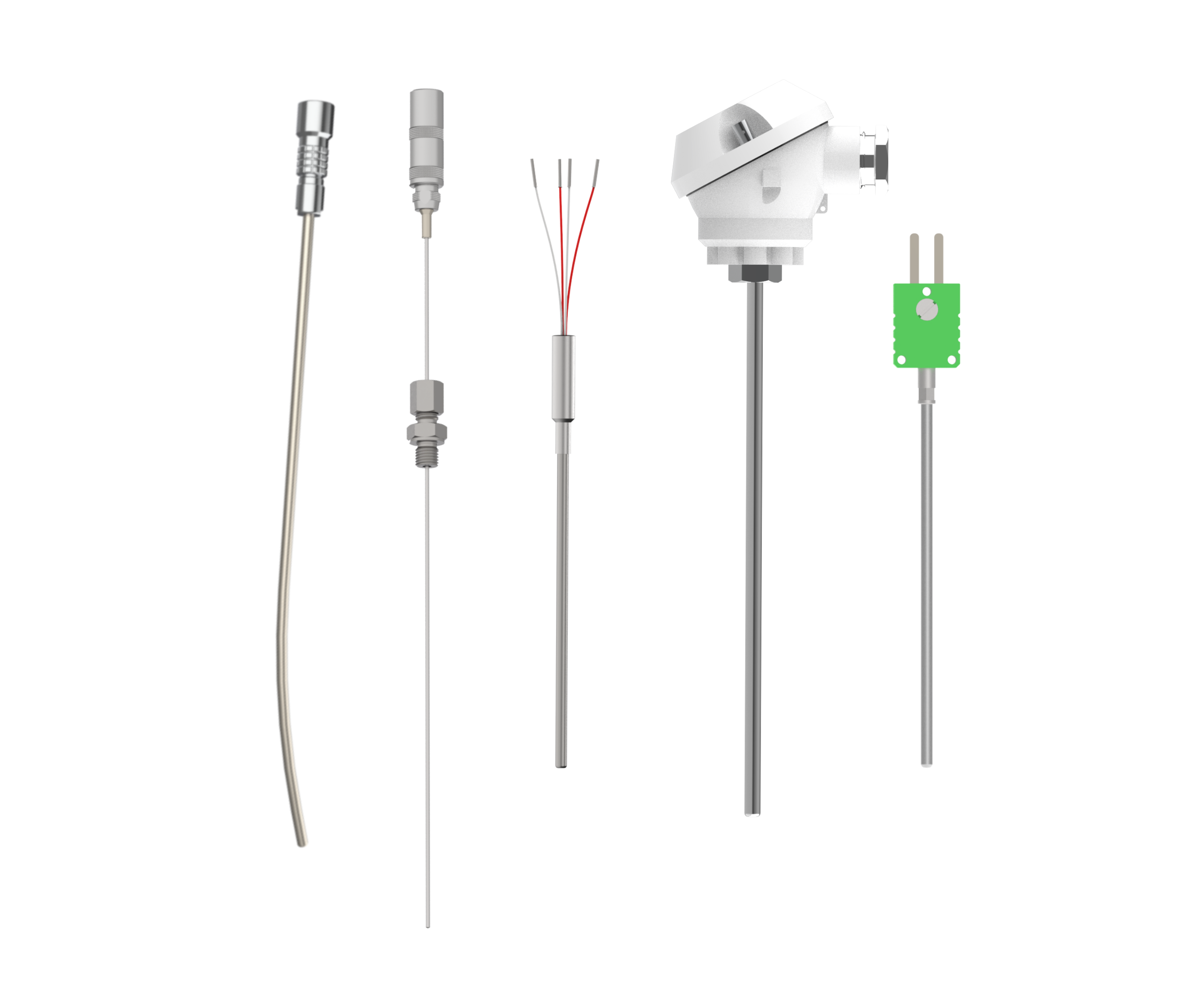Sheath thermometers are divided into sheath thermocouples and sheath resistance thermometers. Depending on the sensor used, the type designations are given the index T or W. In addition to the thermometers defined in this data sheet, they also form the basic design for measuring inserts, surface thermometers, bearing thermometers and multilevel thermometers.
Sheathed thermometers consist of the name-giving sheathed cable with a prefabricated sensor (or sensors) at the “hot end” and an electrical connection at the other end. With sheathed thermocouples, one or more thermocouples are formed by welding the thermocouple wires together. In sheathed resistance thermometers, a measuring resistor is connected to the neutral inner conductors (copper or nickel) and then encapsulated.
The design of the electrical connection determines the type of this series.
The thermocouple sheathed cables’ thermocouple wires comply with the international standards DIN EN, IEC, ASTM, BS, JIS. The neutral inner conductors for resistance thermometer sheathed cablesare most frequently made of copper. Nickel, nickel-copper or nickel-chromium alloys are also used. Magnesium oxide or aluminum oxide is mainly used as a ceramic insulator. Geometries and other properties of sheathed cables are defined in DIN EN IEC 61515. They are manufactured by drawing processes in several stages. The insulation ceramic is highly compacted and sheathed cables have good ductility. The bending radius is min. 5x outer diameter. The non-bendable areas of the sensor sides must be taken into account. A large number of combinations can be produced on this basis. The possible combinations are limited by the maximum temperature load and the necessary heat treatment during the drawing process. Sheathed cables are available in outer diameters between 0.25 and 12.7 mm. For special requirements, sheathed cables can also be manufactured with a double wall thickness. This can be specified as a requirement in the inquiry or order.
The insulation resistance, measured between the outer sheath and inner conductors, is at least 1000 Mohm at ambient temperatures up to 40 °C. This is higher than required by the DIN EN IEC 60584 and 60751 standards.
Operating temperatures:
The operating temperature range is determined by the combination of sensor (thermocouple, measuring resistor) and sheath material. In the low-temperature range, sheath materials with good cold toughness such as 1.4541 and 1.4571 are used.
Tolerance class 3 is available for some thermocouples in accordance with DIN EN IEC 60584; for ANSI – ASTM, the operating range must be specified separately and the material must be selected accordingly. The resistance thermometer standard DIN EN IEC 60751 covers the range down to -200 °C. In the high temperature range, the maximum operating temperature is generally determined by the corrosion behavior of the sheath material under the given operating conditions. The maximum continuous operating temperature of the sensor used also determines the upper limit.
The following overview of sheath materials and their properties provides a guide. For special requirements, coatings with ECTFE or PFA or stellite coatings in particularly corrosive areas can also be realized. Böhme + Ewert GmbH’s application technology department will be happy to provide you with further advice.
Sheath materials can be divided into the following groups according to their alloy components:
- Stainless steels (austenites)
- Iron-chromium alloys (ferrites)
- Nickel-based alloys
- Platinum alloys
Für weiterführende Beratung steht Ihnen die Anwendungstechnik der Böhme + Ewert GmbH gern zur Verfügung.


